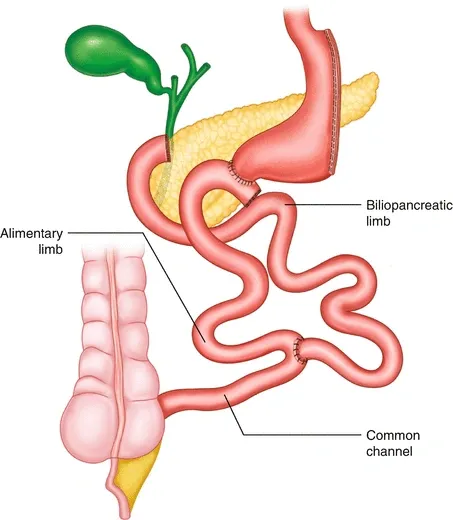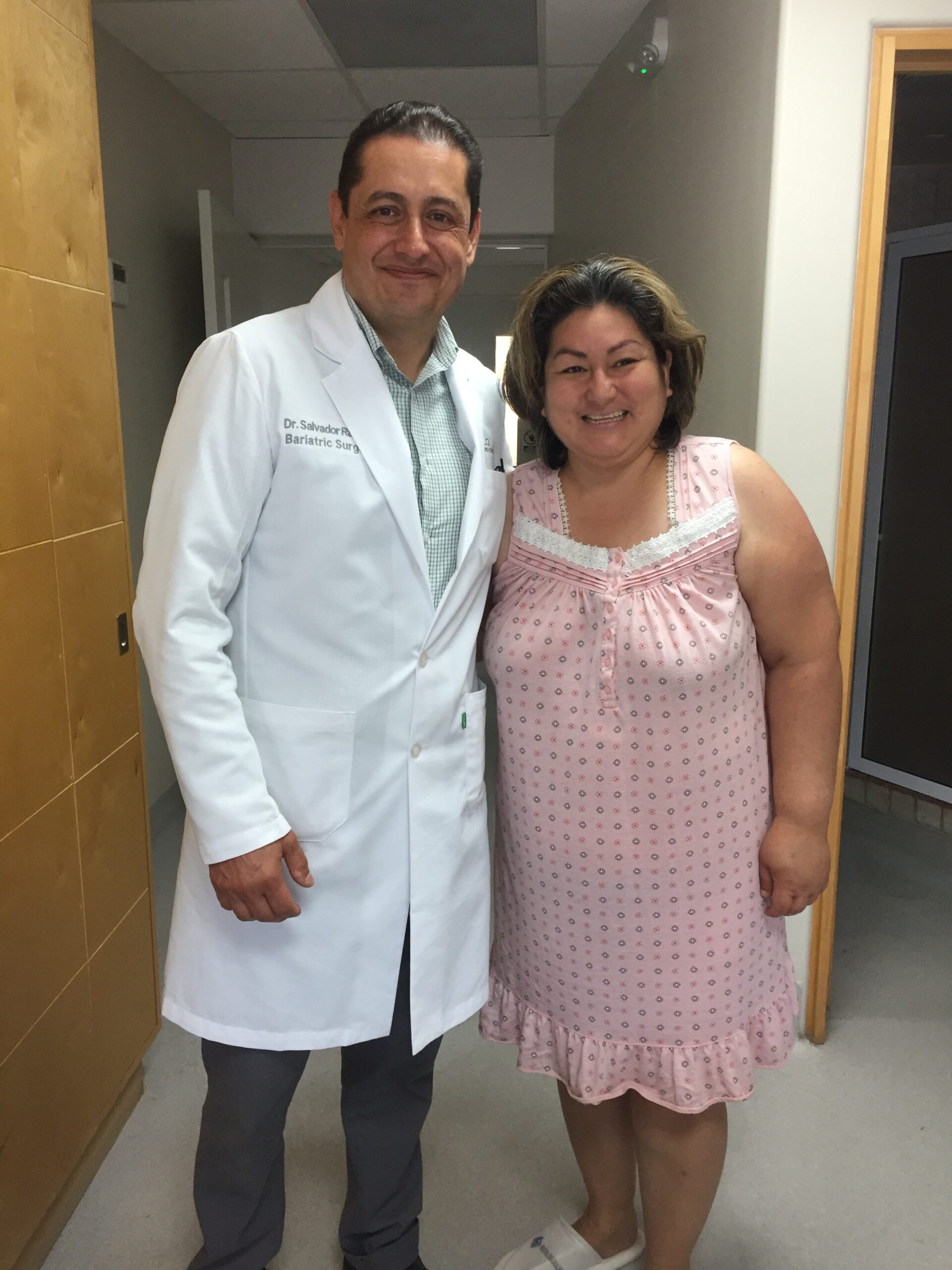Duodenal Switch
What is Biliopancreatic Diversion with Duodenal Switch Surgery?
- Sometimes the surgery is done all at one time in the operating room.
- Sometimes the bariatric team decides that it is best to do this type of surgery in 2 stages where the vertical sleeve gastrectomy is done as the first step of the process.

If you have the vertical sleeve gastrectomy first, Some people will go on to have the second part called duodenal switch some patients are going for the second step while others will not.
You and your bariatric team work closely together to make decisions that are best for you.
%
Successful surgeries
Pounds lost forever
Years of experience




Overview of surgery
This type of surgery is called a restrictive and malabsorptive surgical procedure.
The restrictive part of the surgery is done first by doing a vertical sleeve gastrectomy.
This means that most of the stomach is removed. The stomach is cut creating a longpouch that connects the esophagus to the small intestine. The pouch or ‘sleeve’ is stapled and the rest of the stomach is removed. Since the stomach is smaller, you feel full sooner. This reduces the amount of food you want to eat. You may have already had a sleeve done.
This part of the surgery may decrease the production of a hormone called ghrelin. A decreased amount of ghrelin is thought to reduce hunger therefore causing less food intake. This results in weight loss.
At first, the sleeve holds about 100 to 120 ml (3 to 4 ounces). The size depends on the surgeon doing the surgery. Normally a stomach holds between 1000 and 1500 ml (35 to 50 ounces or 4 to 6 cups). Over time the sleeve will hold between 235 and 350 ml (8 to 12 ounces or 1 to 11⁄2 cups).
The way the food leaves the stomach does not change. The nerves are also left intact. Therefore the stomach is smaller but the function stays almost the same. The smaller stomach continues to function normally.
The pyloric valve is left intact. The pyloric valve controls the amount of food that empties into the small bowel. Food enters slowly so you do not have dumping of food into the bowel called dumping syndrome.
You may have had the gastric sleeve surgery done already.
Overview of the Duodenal Switch Part of Surgery
Next, the malabsorptive part of the surgery is done. It is called a Duodenal Switch for short.
The surgeon divides and switches sections of the small bowel to create 2 separate pathways which then join to form one common channel just before the large bowel:
- One pathway is called the digestive or food channel. It connects the last part of the small bowel, called the ileum, to the stomach sleeve. This pathway carries food from the stomach to the common channel.
- The other pathway is called the biliopancreatic channel. It is the part of the small bowel that connects to the gallbladder and pancreas. It carries bile and digestive juices to the common channel. Bile is a fluid stored in the gallbladder and released by the liver. Bile helps with digestion by breaking down fat. It also helps get rid of cholesterol, water, bile salts, copper and other metals in your body. Pancreatic juices and enzymes also help absorb nutrients from the food you eat and drink.
- The common channel is where the 2 pathways meet and mix before going into the large bowel. The common channel is usually between 75 and 150 centimeters long. Your surgeon can tell you about how long your common channel is after surgery.
The common channel where the 2 pathways meet is where the food, bile and digestive juices are absorbed. This means only a very small section of the small bowel absorbs calories and nutrients. - The gallbladder is commonly removed during this surgery. This is done to prevent gallstones from forming which is common when weight is lost quickly.
After this type of surgery you lose weight because:
- your stomach is smaller and you eat less
- the food you eat and drink bypasses most of the small bowel
- less fat, protein and carbohydrates are absorbed
- the hormones that affect metabolism, hunger and appetite are changed
After this kind of surgery you must be very careful about your nutritional status and it’s important a good follow up with your physiscian or/and nutriologist.
Contact information
Send us an email
Monday - Friday 07h - 22h
Closed on Weekends
Zona Urbana Río
Gobernador Ibarra 9721, America, 22044 Tijuana, B.C.
